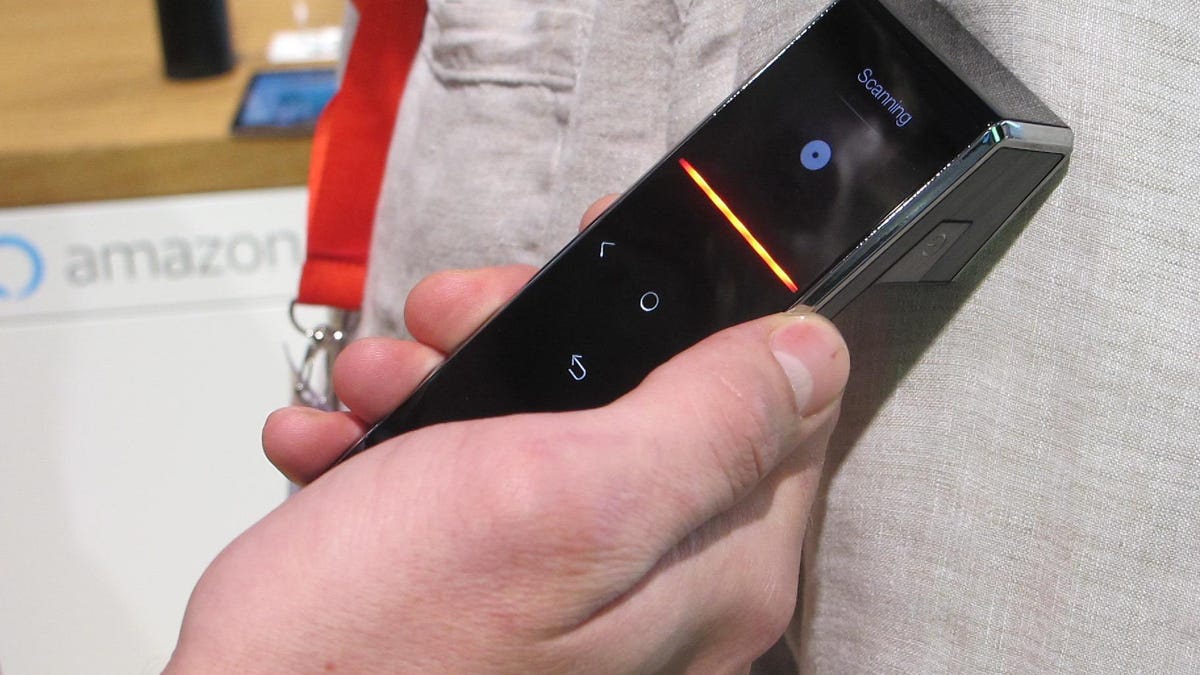The X-Spect scanner reads the makeup of fabric and fruit
Bosch's handheld scanner concept can determine nutritional content of food and what kind of stain is on your shirt.

A representative from Bosch held the X-Spect scanner against my shirt for a few seconds. "Cotton" read the small screen on the handheld device. Close. It was actually linen. "Same molecular structure," said the rep.
The X-spect is just a concept at the moment. It's about the size of a handheld infrared thermometer. Press it against a piece of fabric or a stain, and it can not only determine the kind of material or substance, it can send washing instructions based on its findings to an internet-connected Bosch washing machine.
Switch modes on the device, and it can measure the nutritional content of a piece of food, and even detect the ripeness of a piece of fruit.
Bosch's Dr. Arndt von Bieren, the Head of Advanced Sensor and Food Technologies, spearheaded the development of the X-Spect concept, which he says took just five months. He described the core technology as based on two optical scanners. The scanner itself transmits its readings to the cloud, where an algorithm then determines what the scanner is looking at. The data then travels back to the scanner, and from there you can send it to a connected Bosch appliance.
Dr. von Bieren said the X-Spect technology is similar to that of the SCiO scanner from Israeli firm Consumer Physics, but a key difference is that cloud processing portion and the ability to share the data with other devices. Like the SCiO technology, it can only read the ingredients of homogenous food items -- think an apple, not a slice of cake.
Unique to X-Spect is the ability to also read the makeup of fabric and stains. Right now the X-Spect can determine up to two component materials in a piece of fabric, and also let you know their relative proportions. We saw a demo on a blended cotton-poly t-shirt, for example. The creators hope to bring X-Spect to the point where it can read three different materials. It's not there yet, but it can read four different kinds of stains. I saw it read chocolate and lipstick via a prepared demo at the Bosch booth. Dr. von Bieren says he hopes to get it up to 16 different stains to match the stain-cleaning presets on certain Bosch washing machines.
You can imagine other applications for X-spect technology. One possible goal, said von Bieren, is to build it into refrigerators to intelligently scan their contents. It could also help build an oven that cooks your food automatically.
As the X-Spect is still a concept, Bosch has no information about price or a release date.
Follow CNET's full coverage of IFA 2017
Tech Enabled: CNET chronicles tech's role in providing new kinds of accessibility.
Special Reports: CNET's in-depth features in one place.

